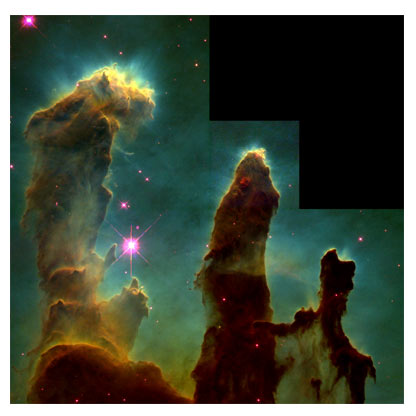How It Sees |
|||

| |||
The Eagle Nebula Parts of the clouds, particularly the finger-like projections you can see at various points along the pillars, are dense enough to collapse under their own weight, forming young stars. These embryonic stars continue growing as long as they can draw mass from the surrounding clouds. But ultraviolet light from massive newborn stars (unseen off the top edge of the picture) is eating away at the pillars, essentially evaporating the gas in these clouds. Such "photoevaporation" gives shape to the pillars and illuminates the fog of gas burning off their edges. If you could go back 4.5 billion years and watch as our sun and solar system formed, you would probably see a region very much like what you see in the Eagle Nebula today. There's a lot more science having to do with understanding the detailed physics of the gas and what images like this tell us about how stars form. But now you have at least a rough idea of both what we're learning from this single snapshot from the Hubble Space Telescope and what it takes to produce all those gorgeous images taken in orbit. For more on how the Hubble works, see the official Hubble Web site. |
|||
| |||